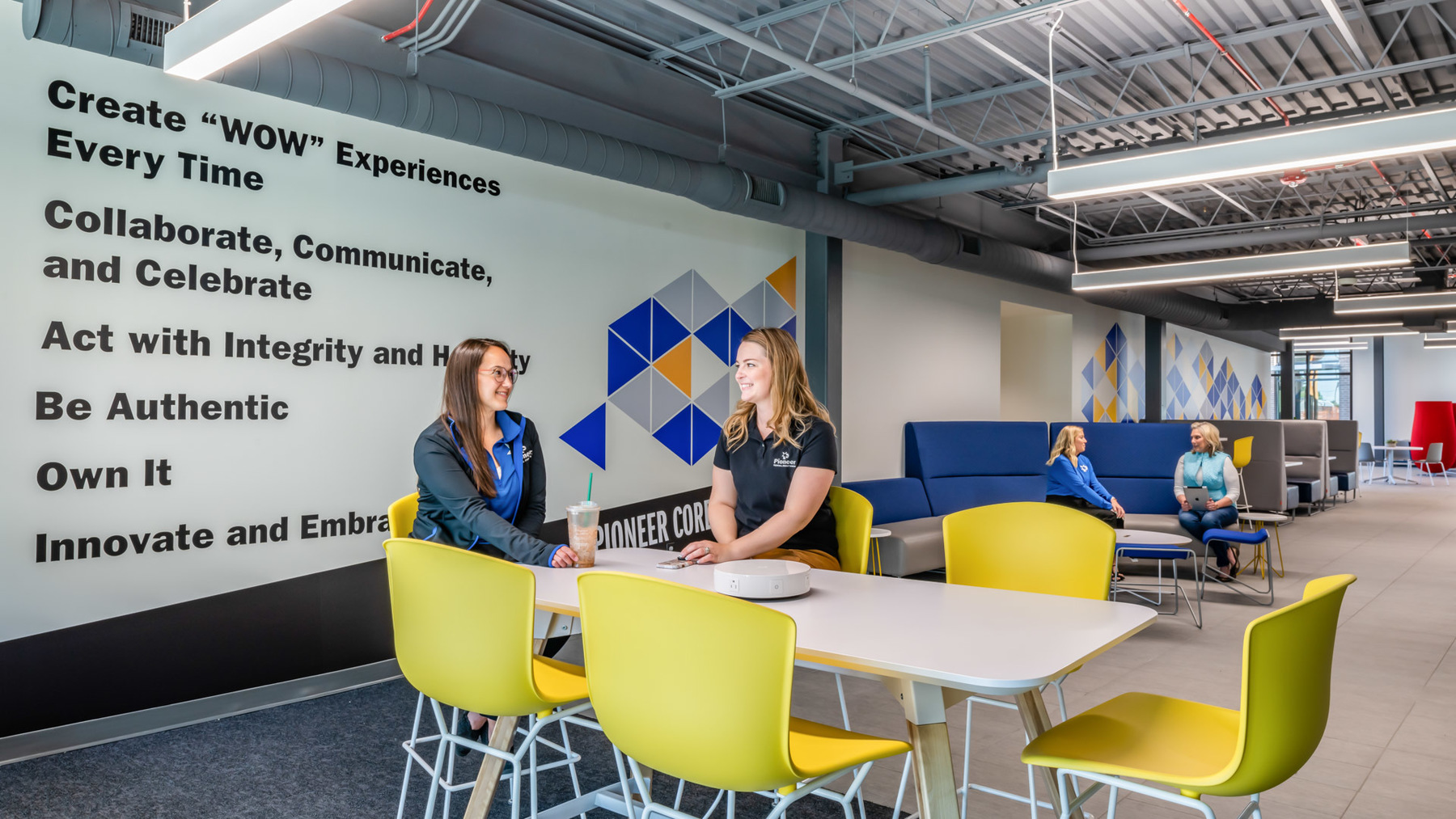Buildings often don’t get the credit they deserve. They ground your organization and play a deep, cultural role – even when many employees aren’t there. They serve as a physical embodiment of your brand, bring employees together, and allow you to bring cultural values to life. And it's through engaging and connecting your staff that your workplace becomes one of your most valuable assets.
Yet it's only the workplaces that truly give people reasons to come in that reap these benefits.
Collisions and unplanned conversations between employees are critical for innovation. Yet in a remote work setting, meetings tend to only happen deliberately.
In-Person Work is Here to Stay
Remote work is here to stay, with only 12% of knowledge workers wanting to work from an office exclusively. Yet the office isn’t going away either, as only 16% of workers want to be fully remote. An overwhelming majority agree that a hybrid workplace is the future of work, and the office will play a major role in keeping people connected.
Why Collisions Matter
Collisions and unplanned conversations between employees are critical for innovation. Yet in a remote work setting, meetings tend to only happen deliberately. This creates barriers between people and can foster a culture of isolation.
People may meet with direct reports, supervisors, and a few members of their team, but impromptu collisions between employees are unlikely to happen. Especially collisions between different departments. Yet these collisions are where the magic happens. They're so important that companies like Zappos use employee collisions as a measure of success in their workplaces.
These collisions are vital for building relationships, spreading ideas between silos, and sparking innovation. They also represent a big part of your culture. They can be anything from water cooler conversations to coffee meetings, and the design of your office along with workplace policies plays a huge role in how these collisions happen.
Features like break rooms where employees relax, a central staircase that breaks the isolation between floors, and unassigned open office working areas can help build a sense of community and reinforce your company culture.
The relationships and familiarity built during these interactions can carry over into a remote setting. When employees meet each other face-to-face they form connections and build stronger relationships. And they are more likely to reach out even when away from the office to chat or discuss ideas.
The Impact of a Great Workplace
A workplace doesn't inspire engagement, collaboration, and positive culture by default. It has to be a place where people have a reason to come into the office, a place where they do their best work.
There is often a disconnect between how employees best do their work and how their workspace supports them. And this situation is exacerbated by employees coming back to the office after a year of working from home. Today’s credit union employees are spending an increasing amount of their workdays away from a dedicated workstation. They're transitioning from routine tasks to more complex, project-based work. The right balance of private focused space and collaborative spaces available can change close this gap. These spaces can better support employees' work and make it easier to come together outside of scheduled meetings.
Wellbeing also plays an important role in this disconnect. Comfortable and healthy working environments play a critical role in great employee experiences, and those that aren't create negative experiences.
This is an opportunity for credit unions and community banks to excel. By embracing a building’s role in the future of work and understanding what your employees need and want from their workplace, you can adapt to these changes and gain a competitive advantage in recruiting, retaining, and engaging the best people in the industry.
To learn more about developing a workplace that supports your employees, download the whitepaper A Study of Credit Union Workplaces and the Future of Work.


